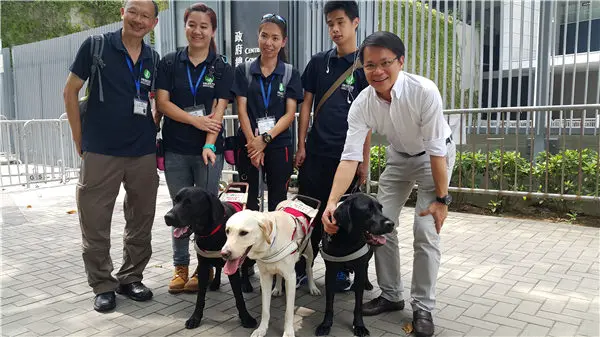If Roger Federer were a superhero (to many, he already is), he would, he says, like to be Thor. At the US Open last year, he nicknamed Juan Martín del Potro “Del Thortro”, after the Argentinian had conjured the most dramatic comeback to defeat Dominic Thiem in five sets, so he clearly shares a lot of TV time with his young children these days.
They will have been thrilled, no doubt, to watch him play alongside Spider‑Man and other comic-book folk in a fun hit-up that drew a far bigger crowd than did Bernard Tomic’s thrilling, three-set exit from the qualifying tournament on Court 8. With lazy fingers sending off nuclear‑missile alerts in Hawaii, it is comforting to be in the presence of a tennis player who could probably save the planet if required.
Roger Federer enjoys a light-hearted hit-up against Spider-Man, among other comic characters, in Melbourne. Photograph: Julian Smith/EPA
As for winning big tennis tournaments, Federer manages still, at 36, to combine the laid-back mien of a contented father of four and the relentless passion of a man who has been a champion for most of his career.
He must now concentrate on beginning the defence of his Australian Open title, against Aljaz Bedene (formerly of Welwyn Garden City, latterly of Slovenia again), and it was pointed that his opponent got not a single mention during Federer’s packed press conference on Sunday afternoon.
Few think Bedene, ranked 51st in the world, will disturb the universe when SuperSwiss unfurls his weapons on Rod Laver Arena on Tuesday to launch a campaign most respected judges reckon will culminate in his second back‑to‑back triumph here, and his 20th major. Speaking with his customised regal air, Federer gave assembled hacks another masterclass in restrained holiness, but made several on-the-money observations about the game and its army of wounded soldiers.
Asked if he thought his fluid, floating style and natural athleticism gave him an advantage over the more overtly physical “baseline grinders” – Andy Murray (hors de combat), Novak Djokovic (armed with a new, elbow-protecting serve) and Stan Wawrinka (owner of one reliable knee) – he demurred. He has had his struggles, too, as he pointed out, winning this title a year ago after seven months out with a banged-up knee.
“The off-season is tougher than playing tournaments – for me anyway,” he said of his regime away from the court. “I work hard in the off-season to create a base that serves me well throughout the season and then I rework the base time and time again throughout the season. I think that’s very important.
“Attacking tennis also has a lot of wear and tear on the body,” he said of his reversion in recent seasons to raiding the net, “because being highly explosive is something that’s a big challenge. Playing more of a reactive game is maybe more physical in the sense that you play longer rallies, you spend more time on the court, but it’s always pretty much the same. It’s a similar rhythm. There’s not that much sprints going on in this regard.
“We talk about Murray and Djokovic being grinders [but] I think they actually play quite aggressively. To be honest, everybody does. Even Rafa [Nadal] is standing closer to the baseline normally than he ever has in the past.
“Injuries can occur in one single moment when you come down from a serve. You’re, like, how did that happen? Sometimes you just don’t know. Sometimes it’s unexplainable how certain injuries happen.
“I’ve played thousands of matches in my life and I’m sure I’ve gotten lucky throughout my career. But sometimes you have to take a minute and talk to the team about it: like, how we’re going to approach these next three months, next year, next day. Everything needs to be perfectly planned to avoid as many injuries as possible.”
Numbers matter to him. Federer and Nadal are the only players in the draw competing for the No 1 world ranking: the Spaniard keeps the crown if he reaches the quarter‑finals but Federer has to keep his title. Nobody is better at that.
Even with his peers battling to just get on court, it will not be easy. Federer won two slams in 2017 because he managed his court time and his energy to perfection. He skipped the clay and probably will not be seen at Roland Garros again. He saw Djokovic and Murray collapse at Wimbledon and he cashed in when Marin Cilic’s run petered out in the final. Federer deserved everything he achieved because he works so hard to get there.
He has won five majors in Melbourne and is comfortable in a city where he has many friends outside the game. Where Federer differs from many players is in creating space around him that looks something like normality.
As he pointed out: “I have a big family. I get to see familiar faces again at all these events because I’ve made so many friends over the course of my career. I’m so happy to come back to Melbourne, see all my friends that live here in Melbourne.
“It’s nice that it’s never actually gone away, the fun aspect of enjoying the travel, coming back to Australia. These are great times in my life and in my career. My wife is incredibly supportive. Is it the best ever? I’m not sure. It’s definitely a lot of fun right now.”
As the service came to an end, a journalist – perhaps jet-lagged or still dazzled – banged his head on a low-hanging camera and fell to the ground. “Are you, OK?” inquired Federer from the other end of the room. Is there no end to the man’s magnificence? SuperSwiss: a hero for our times, to gobsmacked hacks, young children and … well, maybe not those striving to bring him down here over the next fortnight.
(GUARDIAN)
 简体中文
简体中文

